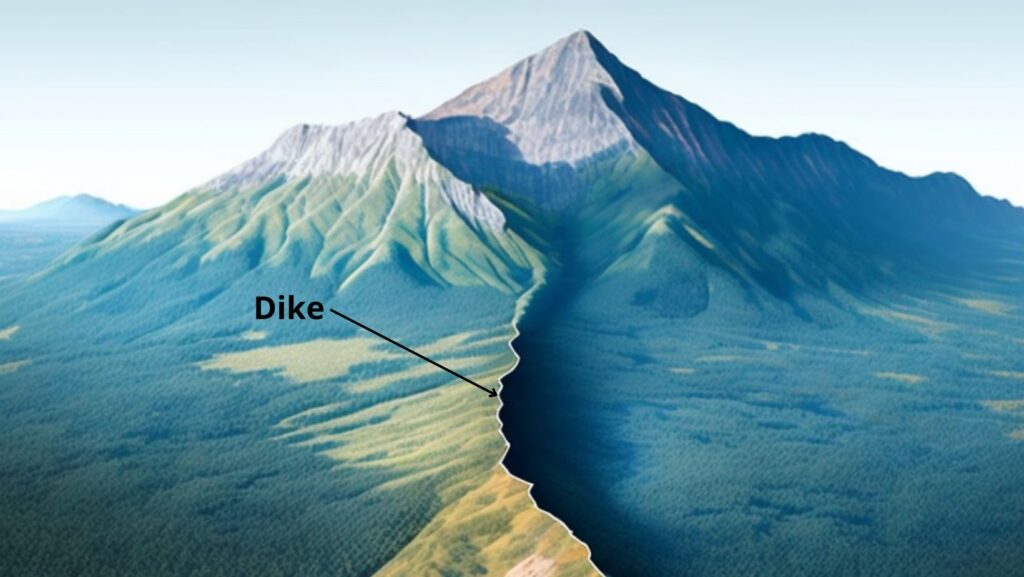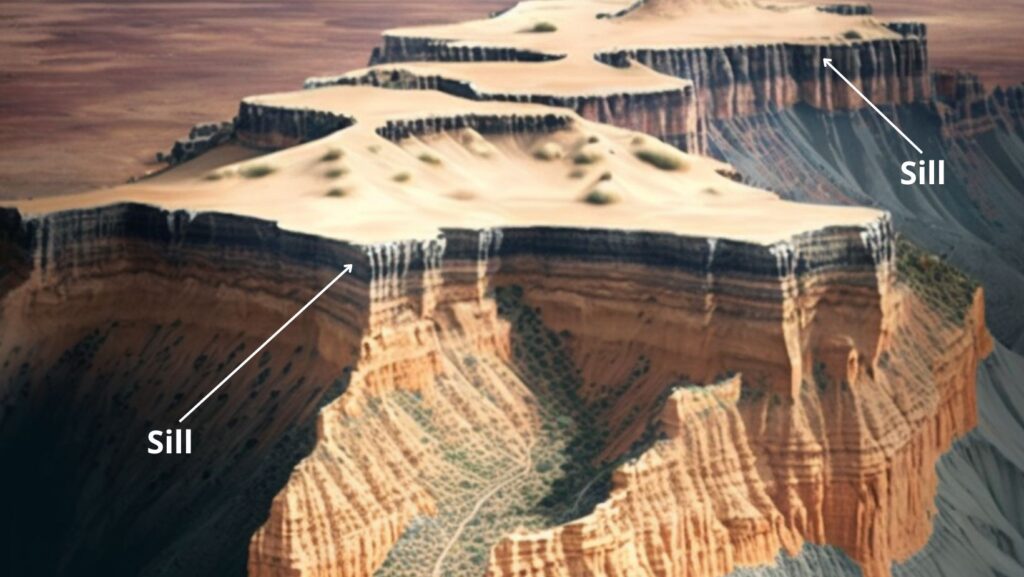Tabular Intrusive Bodies: Dikes and Sills

Introduction
Tabular Intrusive Bodies refer to the flat, elongated masses of igneous rocks that have been injected into the surrounding rock units. These bodies can be divided into two main categories: Dikes and Sills. Both Dikes and Sills are of great importance to geologists as they provide valuable information about the magmatic processes and tectonic activity that took place in a particular region.
Dikes

Dikes are tabular intrusive bodies that cut across the existing rock units, resulting in sharp contacts between the intrusive and the surrounding rock. They are formed when magma rises from deep within the Earth’s crust and intrudes into cracks or faults in the overlying rock. Dikes can be either vertical or inclined, depending on the orientation of the cracks or faults. They are typically composed of coarse-grained igneous rocks, such as basalt, diorite, or gabbro, and can range in thickness from a few centimeters to several meters.
One of the most notable features of Dikes is their ability to provide valuable information about the direction of magmatic flow. By analyzing the orientation of Dikes in a particular area, geologists can determine the direction of magmatic movement and, therefore, the source of the magma. Additionally, Dikes can be used to study the timing of tectonic events, as they can be dated using radiometric methods to determine the age of the intrusion.
Sills

Sills are tabular intrusive bodies that lie parallel to the existing rock units, resulting in a gradual contact between the intrusive and the surrounding rock. They are formed when magma intrudes into horizontal cracks or layers in the overlying rock. Sills can be several meters to several kilometers thick and can cover large areas. They are typically composed of fine-grained igneous rocks, such as basalt, andesite, or rhyolite, and are characterized by their flat and extensive nature.
One of the most important uses of Sills is for studying the timing of tectonic events. By analyzing the relationship between the sill and the surrounding rock units, geologists can determine the relative age of the intrusion. This information can be used to reconstruct the tectonic history of a particular region and to understand the nature and timing of tectonic activity.
Conclusion
In conclusion, Tabular Intrusive Bodies, including Dikes and Sills, play a vital role in the study of geology. By providing valuable information about the magmatic processes and tectonic activity that took place in a particular region, they help geologists to better understand the Earth’s crust and the processes that have shaped it. The unique characteristics of Dikes and Sills make them important tools for geologic studies and for exploring the Earth’s subsurface.
